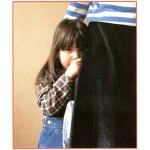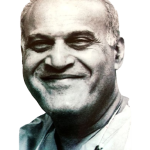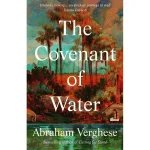
Dubai, once a relatively unknown part of the world, has today emerged as an important and strategic crossroad between the East and the West. It is a hub of international affairs, a first among equals, a venue where before the ink has dried on the contract, the construction is underway and in the blink of an eye the furniture is moving in. Not many people are flabbergasted any more for the slick, stylish and skilful work pattern has become the raisin d’être for Dubai’s success.
Twenty five year old G.E. Chapman arrived in Dubai in 1951. Reminiscing over the early years and going back over a century in history, he explained that in 1820 a section of the Bani Yas tribe established an independent state at Dubai. Despite succession of wars with neighbouring states during the rest of the century, Dubai retained independence and the relative decline of Sharjah, largely due to the silting of the Creek and the influx of Persian merchants from Lingah, laid the foundation for the present prosperity of the Emirate.
As far as one can gather, elaborated Chapman, “Dubai ruled by Sheikh Makhtoum bin Hashar around the 1890’s, was a small fishing town of mud buildings and reed huts clustered around a large fort constructed of coral and mud on the western side of the tidal inlet now known as Khor or Creek. Kuwait and Bahrain had been the principal entrepôt in the Arabian Coast and Dubai, with the expertise brought by Persian settlers, became the main trading centre for the hinterland of the Oman Peninsula. Trading grew slowly during the first half of the nineteenth century with the southern part of Iran and Baluchistan becoming the leading customers. The main commodities were grain, tea and rice. There was also demand for large oyster shells, collected from the pearling banks, which were sent to Germany where they were used to make buttons and buckles.”
“Dubai”, he continued, “was once an important centre for pearls, gathered from the shoals lying off the Qatar and Trucial Coasts. In its heyday more than 100 boats, each manned by 30 or 40 husky, chanting slaves pulling on long sweeps, would return to Dubai in flotillas with their valuable cargo at the end of the pearling season. It was also the hot and humid months from May to September during which time the drivers would remain cramped in their boats on the pearling banks, their meagre ration of food and water was replenished periodically. Pearl diving was a hazardous occupation and incidents of respiratory illness was high, with sickness and disease spreading rapidly in the crowded boats.”
In the 1940s, the port began to expand, and Chapman said, “When Gray Mackenzie & Co. were appointed landing contractors to the Government, three small steel barges and a motor for launch were stationed there to handle the growing import cargoes. Till then they had been transported by sailing boats called tishallahs. Several thousand tons of dried fish were exported to Europe each year and used for fertiliser and cattle food.”
In 1951 George Chapman was appointed Wakil (Agent) of the small office of Gray Mackenzie (now MMI). Dubai was then the principal township on the coast with a population of about 17000 and could boast of little in the way of facilities. Fish, rice and bread, with an occasional emaciated chicken or goat were the staple diet with limited tinned food sold by two small shops. Apart from white radish and a type of cress, pomegranate from Oman and some bananas in season from the Bhatinah Coast, there were no other fruit or vegetables to augment the limited diet. “Perhaps providential in a way”, he added, “because the only cooling was by kerosene powered refrigerators which were not cheap and had to be inverted for 24 hours every few months to restore the cooling system!” Chapman’s most embarrassing moment was being caught pilfering toilet paper from the cabin of a mail steamer and being caught by the captain!
The roads were tracks that swiftly became quagmires in heavy rain and the first stretch of a one-kilometre tarmac road was not laid until 1960 between the Creek and the new Palace at Zabeel. There were a few Land Rovers and vintage saloon cars and the Model T Ford was owned by Sheikh Shakbut of Abu Dhabi. It miraculously made the journey between Abu Dhabi and Dubai along the beach for 50 miles to Khor Ghanada before striking inland and over the ten-mile treacherous Sabkha to Abu Dhabi island. People only travelled if they had to because should you get stuck, there were not many Bedouin villages along the way that would render help in case of need. Chapman related an incident when he was stuck in his Land Rover for 24 hours in the salt marshes on the way to Abu Dhabi. “It was like sitting on top of a custard pie”, he said, but admitted that it was with regret that he changed his hardy Land Rover for a sleek saloon many years later. “Bumping up and down every sand dune in the Land Rover kept me very fit physically,” he said, “I got all the exercise I needed. Now I have to run a couple of miles a day along the beach to keep fit.”
Chapman said it was necessary to carry everything such as water, food, tent, spade, ropes and a piece of steel sheet known as chinko to help dig the car out of the sand and advisably a hand spray and a tin of ‘impish’ for the flies. On the East Coast, during the early months of the year, the flies were so numerous, attracted by the dried fish used for fertilising the date palm gardens, that it was impossible to expose any food during daylight hours. Everyone ate before sunrise or after sunset. The construction of the roads has been one of the greatest contributions to development in the area. To give an idea of the terrain, a trip to Al Ain took eight hours provided one got over the Ramlet sands on the first attempt. Khorfakkan was about the same duration via Aswad in Oman as there were no passable routes through the Hajar Mountains and Muscat was nearly 24 hours away.
Within Dubai, the only transport to Deira was by rowing boat or Abra (Arabic for crossing to the other side). “One became accustomed to their erratic movements in time but there were many mishaps,” recalled Chapman. Medical facilities were limited to say the least, but for the Doctor of the Coast, Col. D. G. McCaully, who was the unofficial doyen of the foreign community and a big man in every way in spite of his ‘hospital’ being a mud room on the side of the creek measuring 14 by 12 by 6 feet high. An unforgettable sight, recalled Chapman, was that of Desmond’s entire 6 feet 2 inches bulk descending the steps of the Beyt Wakil (Agent’s House) by moonlight. He walked straight passed the Abra and disappeared under the somewhat grubby waters of the Creek. An extensive salvage operation the following morning recovered spectacles and other personal possessions of the good Doctor often including his stethoscope!
The name Dubai derives from the Arabic word for young locusts not yet able to fly, and in this form, denotes a soft tract of desert where locusts lay their eggs. Chapman muses that the adjective “soft” belies the turbid past and exciting future of this once relatively unknown part of the world. Dubai developed a hundred years in ten, emerging as an exciting, strategic and prominent area in modern-day world affairs.





Wonderful anecdote of the old Dubai! ☺️